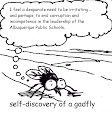The (lack of) success story at Rio Grande High School is back in the Journal; this time reporting successful(?) reform, link. The success is debatable.
There are two steps which must be taken to close the achievement gap. If those two steps are not taken, success if any, will be marginal. The steps address overriding considerations; those whose effect is so great as to dwarf the effect of any other reform.
1. End social promotion.
The idea that a student, behind in the first grade, will catch up in the second, is not supported by any real world data. The truth is that they get further behind in the second, even further behind in the third, and continue to fall further behind every year for as long as they are in school.
Social promotion was not the brain child of teachers; it was an administrative edict. Its purpose; kick the can down the road. Unfortunately, by the time the can gets kicked into their senior year, there is nowhere to kick the can to. Universities are holding the line against admitting high school graduates with no skills to enable their survival in classes where there is no social promotion.
The excuse offered; it is damaging to a student's psyche to hold them back. The damage done to their psyche by being put into situations where they have no opportunity to succeed, escaped discussion.
The idea that kids, with nothing in common but the year of their birth, can be made to move at the same pace in the same direction for 12 years is preposterous on its face.
Instead of social promotion, insist instead upon mastery learning wikilink; when you have mastered one level, you move to the next. If you have not mastered the material, you do not.
2. Remove chronically disruptive students.
There are students in every school whose presence interferes with the education of other students. Administrators are content to saddle teachers with the responsibility of managing children who are out of control, and they remain in class, their behavior unmitigated by any solution available to classroom teachers.
There needs to be another place for chronically disruptive students. We used to expel them (not the best answer by any means, but it did protect other students from their disruptive behavior).
For as long as students are not required to master subject matter, they will not.
For as long as chronically disruptive students are allowed to continue to disrupt the education of other students, they will.
For as long as these two conditions are allowed to prevail, there will be achievement gaps; enormous achievement gaps.
Sunday, February 21, 2010
The solution to problems at Rio Grande High School, and at every other school.
Posted by
ched macquigg
at
12:23 PM
![]()
Subscribe to:
Post Comments (Atom)

No comments:
Post a Comment